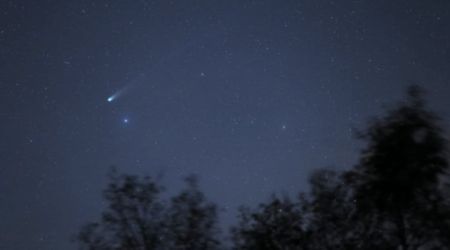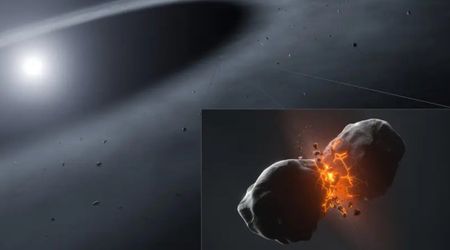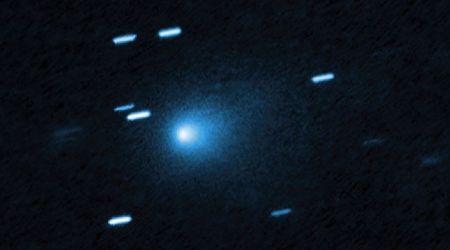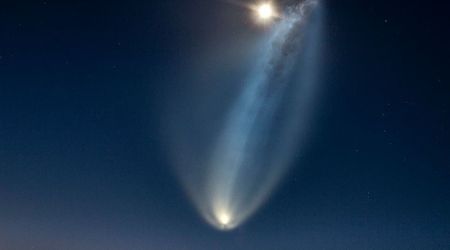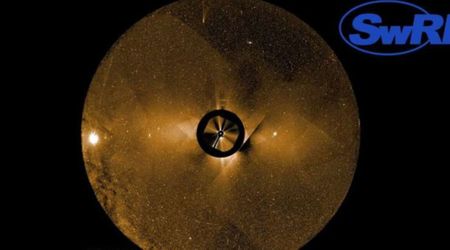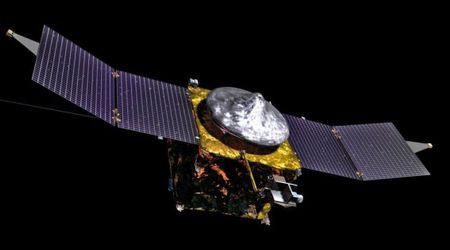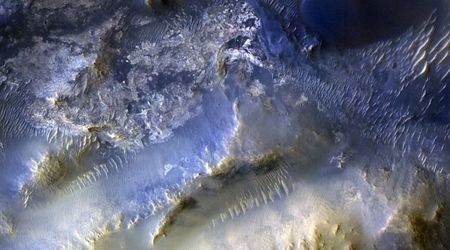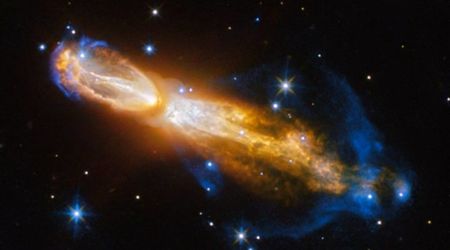Hubble's latest portrait of galaxy cluster 2.8 billion light-years away holds cosmic secrets beyond what's visible

The NASA Hubble Space Telescope has captured a striking new image of Abell 209, a colossal galaxy cluster situated 2.8 billion light-years away in the constellation Cetus. This remarkable portrait offers a deeper understanding of the universe's most enigmatic components, including the elusive dark matter. The newly released Hubble image showcases over a hundred individual galaxies within Abell 209. However, the cluster's true complexity extends far beyond visible light. The vast expanses between these galaxies are filled with scorching, diffused gas, detectable only through X-ray observations, as mentioned on NASA.
A massive, spacetime-warping cluster of galaxies swarms this week's new #HubbleFriday view!
— Hubble (@NASAHubble) July 11, 2025
Called Abell 209, this cluster is a whopping 2.8 billion light-years away. Its mass is powerful enough that it bends light traveling from galaxies behind it: https://t.co/4BFfLR5pau pic.twitter.com/9FUKVRzHbG
Even more mystifying is the presence of dark matter, an invisible substance that neither absorbs, reflects, nor emits light. Its existence is inferred solely through its profound gravitational effects on visible matter. Current cosmological models suggest that dark matter accounts for approximately 25% of the universe's composition, with ordinary matter making up a mere 5%, and dark energy comprising the remaining 70%.

Observations like these, facilitated by Hubble's advanced capabilities, are instrumental in addressing fundamental questions about cosmic evolution, particularly concerning dark matter and dark energy. The immense gravitational pull of such galaxy clusters can warp the very fabric of spacetime, producing distorted and magnified views of more distant galaxies and stars, a phenomenon known as gravitational lensing.
While this particular image of Abell 209 doesn't exhibit the pronounced rings often associated with strong gravitational lensing, subtle distortions are evident. Streaky, slightly curved galaxies within the cluster's luminous halo provide crucial clues. By meticulously measuring these distortions, astronomers can precisely map the cluster's mass distribution, thereby illuminating the invisible scaffolding of dark matter that pervades it. This detailed data, made possible by Hubble's exceptional resolution and sensitive instruments, is vital for rigorously testing prevailing theories on the universe's formation and development.

In a separate but equally captivating observation, the Hubble Space Telescope has provided an unprecedented look at a supermassive black hole's ravenous appetite within the spiral galaxy UGC 11397, located 250 million light-years away in the constellation Lyra. While UGC 11397 presents as a typical spiral galaxy with elegant arms of stars and dust, its core harbors a truly colossal secret.
A cosmic weigh-in 💪
— Hubble (@NASAHubble) June 27, 2025
Hubble observations, like the ones captured for this new #HubbleFriday view of UGC 11397, will help scientists weigh nearby supermassive black holes, and understand how black holes grew early in the universe’s history: https://t.co/XsIVK0rleK pic.twitter.com/CViZO3udoy
At its heart lies a black hole 174 million times the mass of our Sun, relentlessly devouring gas, dust,m and even entire stars, This doomed material, as it spirals inward, undergoes extreme heating, unleashing a spectacular cosmic light show across the entire electromagnetic spectrum, from high-enrgy gamma rays to radio waves. The black hole's erratic feeding frenzy causes its brightness to fluctuate unpredictably.
Despite significant obscuration by thick dust clouds in visible light, the black hole's intense activity was definitively confirmed through its powerful X-ray emissions. These high-energy rays are capable of penetrating the surrounding dust, leading astronomers to classify UGC 11397 as a Type 2 Seyfert galaxy. This destination is given to active galaxies where a donut-shaped cloud of dust and gas obscures the central, highly energetic region from direct optical view. Researchers are now leveraging Hubble's capabilities to study hundreds of similar galaxies, including UGC 11397, which host accreting supermassive black holes. These ongoing observations are critical for accurately measuring the mass of nearby supermassive black holes, gaining insights into their growth during the universe's early stages, and even investigating how stars form in the extreme environments found at the very heart of a galaxy.
